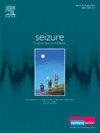癫痫患者视网膜变薄:荟萃分析
IF 2.8
3区 医学
Q2 CLINICAL NEUROLOGY
引用次数: 0
摘要
背景与目的癫痫与神经退行性改变有关,包括神经元和轴突的丧失。癫痫相关的神经元损失可能在视网膜水平上反映为视网膜变薄。几项光学相干断层扫描(OCT)研究报告了癫痫患者视网膜厚度变化的不同和相互矛盾的结果。我们进行了一项荟萃分析,以阐明通过OCT评估成人和儿童癫痫的视网膜层厚度变化,并检查这些变化与疾病、患者和治疗相关因素的关系。方法采用PRISMA 2020指南,系统检索PubMed、EMBASE、Cochrane Library数据库2000 - 2024年间发表的研究。采用改良的纽卡斯尔-渥太华量表(NOS)评估偏倚。荟萃分析估计了与年龄匹配的对照组相比,暴露于维加巴林(VGB)和未暴露于维加巴林(VGB)的成年癫痫患者和未暴露于VGB的儿科癫痫患者的乳头周围视网膜神经纤维层厚度(pRNFLT)的加权平均差异(WMD)。结果在1773项记录中,共有18项横断面研究,1063例患者被纳入荟萃分析,分为三组进行比较。与未暴露于VGB的成年人相比,VGB治疗的患者显示出显著的合并pRNFL变薄(WMD=-17.697µm, 95% CI:25.163至-10.230,P <;0.001, n = 5)。与对照组相比,未暴露于VGB的成年癫痫患者的pRNFLT也显著降低(WMD=-6.655µm, 95% CI:8.77至-4.53,P <;0.001, n = 10)。扇形分析显示,pRNFL厚度减少在上下象限最为明显,在颞象限最不广泛。小儿癫痫患者的pRNFL变薄趋势无统计学意义。meta回归分析未发现任何显著的患者或疾病相关协变量。结论在成年癫痫患者中,除了vgb相关的视网膜变薄外,pRNFL也有相当大的变薄,并以视网膜上象限和下象限为主。OCT作为成人癫痫患者神经退行性改变的生物标志物的潜在临床应用及其在监测和预测方面的合理作用值得进一步研究。本文章由计算机程序翻译,如有差异,请以英文原文为准。
Retinal thinning in epilepsy: A meta-analysis
Background and Objectives
Epilepsy has been linked with neurodegenerative changes, including neuronal and axonal loss. Epilepsy-related neuronal loss may be reflected on a retinal level as retinal thinning. Several Optical Coherence Tomography (OCT) studies have reported varied and contradicting results with regard to retinal thickness changes in epilepsy. We conducted a meta-analysis to elucidate retinal layer thickness changes in adult and pediatric epilepsy as assessed by OCT and to examine the relationship of these changes with disease, patient, and treatment-related factors.
Methods
Using PRISMA 2020 guidelines, PubMed, EMBASE, Cochrane Library databases were systematically searched for studies published between 2000 and 2024. The modified Newcastle-Ottawa Scale (NOS) was used to assess bias. Meta-analyses estimated the weighed mean difference (WMD) of peripapillary retinal nerve fiber layer thickness (pRNFLT) in adult patients with epilepsy exposed and not exposed to vigabatrin (VGB), and pediatric patients with epilepsy not exposed to VGB, compared to age-matched controls.
Results
Following the screening οf 1773 records a total of 18 cross-sectional studies of 1063 patients were included in the meta-analyses, categorized into three groups to enable comparisons. VGB-treated patients exhibited significant pooled pRNFL thinning compared to adults not exposed to VGB (WMD=-17.697 µm, 95 % CI:25.163 to -10.230, P < 0.001, n = 5). A significant pRNFLT reduction was also observed in adult patients with epilepsy not exposed to VGB, compared to controls (WMD=-6.655 µm, 95 % CI:8.77 to -4.53, P < 0.001, n = 10). Sectorial analysis showed that pRNFL thickness reduction was most pronounced in the superior and inferior quadrants and least extensive in the temporal quadrant. Pediatric patients with epilepsy exhibited a non-statistically significant trend toward pRNFL thinning. Meta-regression analyses did not reveal any significant patient or disease-related covariates.
Conclusions
In addition to VGB-related retinal thinning there is also considerable pRNFL thinning in adult patients with epilepsy with a predilection for the superior and inferior retinal quadrants. The potential clinical utility of OCT as a biomarker of neurodegenerative changes in adults with epilepsy and its plausible role in monitoring and prognostication merit further investigation.
求助全文
通过发布文献求助,成功后即可免费获取论文全文。
去求助
来源期刊

Seizure-European Journal of Epilepsy
医学-临床神经学
CiteScore
5.60
自引率
6.70%
发文量
231
审稿时长
34 days
期刊介绍:
Seizure - European Journal of Epilepsy is an international journal owned by Epilepsy Action (the largest member led epilepsy organisation in the UK). It provides a forum for papers on all topics related to epilepsy and seizure disorders.
 求助内容:
求助内容: 应助结果提醒方式:
应助结果提醒方式:


